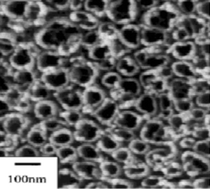A perspective on nanophase materials for orthopedic implant applications
Abstract
In the past, synthetic conventional materials have not served as satisfactory implants. As an example, the current average lifetime of an orthopedic implant (such as hip, knee, ankle, etc.) is only 10 to 15 years. Clearly, such conventional materials (or those materials with constituent dimensions greater than 1 micron) have not invoked suitable cellular responses to regenerate enough bone to allow these devices to be successful for long periods of time. In contrast, due to their ability to mimic the dimensions of constituent components of natural bone (like proteins and hydroxyapatite), nanophase materials may be an exciting successful alternative orthopedic implant material. Nanophase materials are defined as materials with constituent dimensions (and/or associated surface features) less than 100 nm in at least one direction. This review article discusses recent studies that have been conducted to determine the efficacy of nanophase materials as orthopedic implants. In doing so, compared with conventional orthopedic implant materials, it is suggested that nanophase materials can be synthesized to possess similar nanometer dimensions as components of natural bone to promote new bone formation; a criterion critical to orthopedic implant success.


 Please wait while we load your content...
Please wait while we load your content...